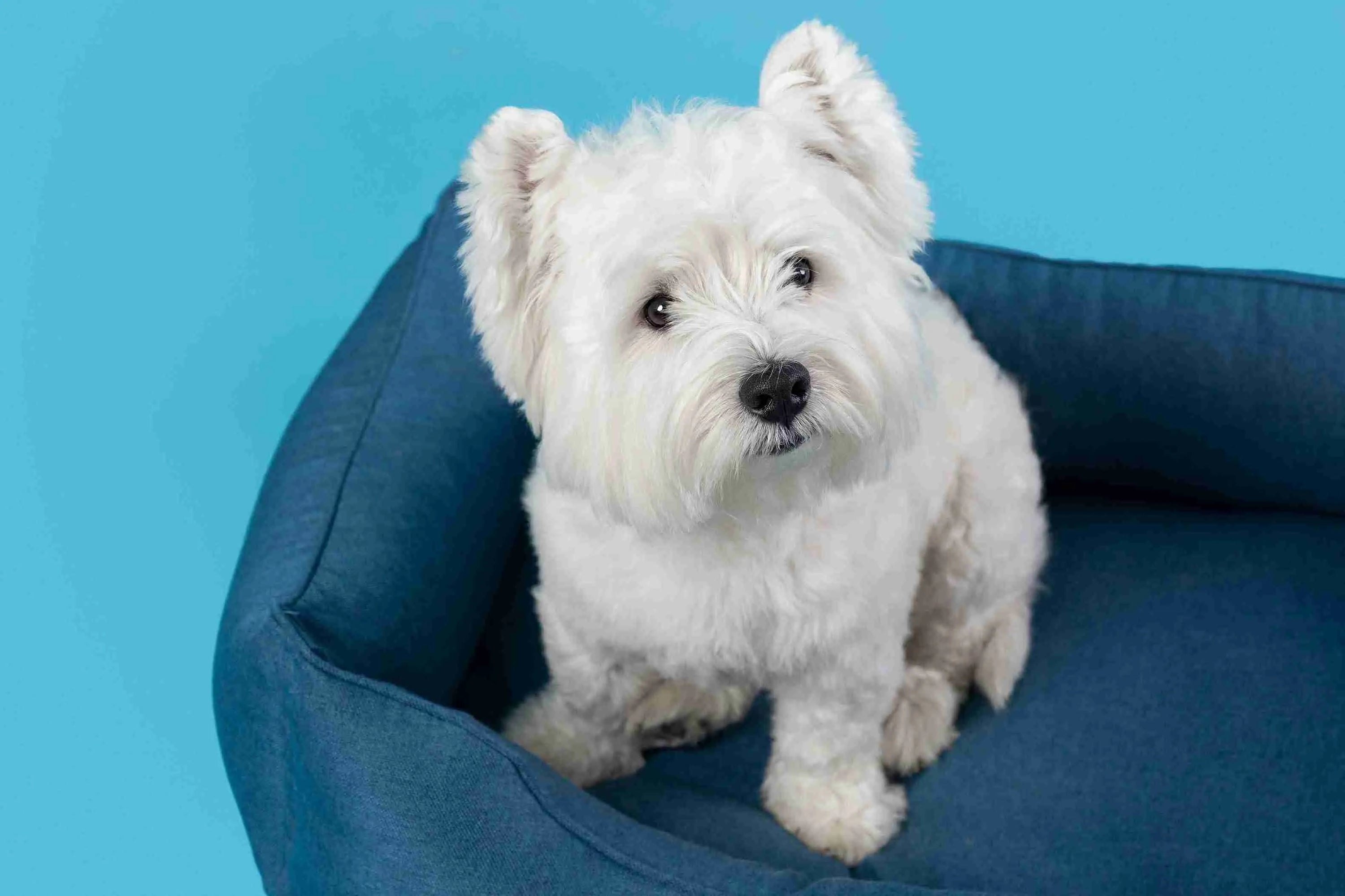West Highland White Terrier
America’s Spirited and Charming Terrier
1. Introduction to the Breed
The West Highland White Terrier, securing the #38 spot in the 2024 American Kennel Club (AKC) rankings, is a spirited and charming breed cherished for its bold personality and snowy white coat. Known as “Westies,” these small terriers are beloved for their plucky demeanor and versatility, making them ideal for families, singles, or seniors seeking a lively companion. Their compact size and confident nature suit urban or suburban homes, where their playful energy and loyal affection shine.
2. History of the Breed
Originating in Scotland in the 19th century, West Highland White Terriers were bred to hunt vermin like rats and foxes in the rugged Highlands. Developed from Cairn Terrier stock, their white coat distinguished them from prey during hunts. Recognized by the AKC in 1908, Westies gained U.S. popularity for their charm in dog shows, advertisements, and as family pets, notably as the face of a famous whiskey brand. Their spirited personality and distinctive appearance continue to captivate American dog lovers.
3. Physical Characteristics
- Typical Size and Weight: Westies are small, standing 10–11 inches tall at the shoulder and weighing 15–20 pounds for both males and females, with a sturdy, compact build.
- Coat and Color: Their double-layered coat is medium-length, with a harsh, white outer coat and soft undercoat, making it hypoallergenic. The coat sheds minimally but requires regular grooming.
- Distinctive Features: Westies have a rounded head, dark, expressive eyes, and small, erect ears. Their carrot-shaped tail and bright white coat give them a distinctive, perky appearance.
4. Personality Traits
West Highland White Terriers are confident, playful, and affectionate, with a bold terrier spirit that makes them excellent companions. They form strong bonds with families, enjoying interaction with older children and familiar pets, but their prey drive may lead to chasing small animals. Westies are vocal, often barking to alert strangers, making them effective watchdogs. Their intelligence and independence suit owners who provide structure and mental stimulation to prevent boredom-driven behaviors like digging or barking.
5. Care Requirements
- Exercise Needs: Westies need 45–60 minutes of daily exercise, such as brisk walks, play sessions, or digging games in a secure area. Mental stimulation through puzzle toys or training keeps their sharp minds engaged.
- Grooming Needs: Their coat requires brushing 2–3 times per week and professional clipping or stripping every 6–8 weeks to maintain texture. Regular ear cleaning, nail trimming, and dental care prevent infections.
- Dietary Considerations: A small-breed diet with high-quality proteins supports their energy and coat health. Portion control prevents obesity, and foods with omega fatty acids reduce skin sensitivities, as Westies are prone to allergies.
6. Health and Lifespan
West Highland White Terriers have an average lifespan of 13–15 years. Common health issues include skin allergies (atopy), patellar luxation, craniomandibular osteopathy (jaw bone issues), and pulmonary fibrosis. Regular vet checkups, skin screenings, and a healthy lifestyle mitigate risks. Owners should monitor for scratching, limping, or breathing difficulties and ensure a low-allergen diet to manage skin issues. Genetic testing from breeders reduces hereditary concerns.
7. Training and Socialization
Westies are intelligent but stubborn, requiring patient, positive reinforcement training with treats or play. Their terrier independence demands consistent, engaging sessions to maintain focus. Early socialization ensures comfort with strangers, children, and other animals, reducing excessive barking or chasing instincts. Teaching commands like “quiet” and “stay” helps manage their vocal tendencies. Activities like agility or terrier trials channel their energy effectively.
8. Ideal Home Environment
Westies thrive in homes with secure yards, ideal for urban or suburban settings where they can explore safely. They suit active families or individuals who enjoy playtime or training. Apartments can work if exercise needs are met, but their vocal nature requires management in close quarters. Owners should provide a stimulating, secure environment to prevent digging or wandering and ensure a comfortable setting for their affectionate nature.
9. What’s the Best Toy for My West Highland White Terrier?
West Highland White Terriers enjoy toys that suit their spirited, terrier nature and moderate energy. Interactive puzzle toys with treat compartments engage their sharp minds, providing 15–20 minutes of indoor mental stimulation. Durable chew toys made of tough rubber satisfy their strong chewing instincts, ideal for 15–20 minute sessions, especially with treats for added challenge. Squeaky plush toys mimic prey, encouraging light chasing or tossing for 10–15 minute play bursts, though supervision prevents tearing. Small, sturdy balls for fetching tap into their playful energy, suitable for short outdoor sessions. Avoid flimsy toys, as Westies can destroy them, risking choking. Rotate toys regularly and pair with digging or agility games for engagement.
10. Adoption and Breeder Tips
Choose breeders affiliated with the West Highland White Terrier Club of America, ensuring health clearances for skin, knees, and jaw conditions like craniomandibular osteopathy. Visit the breeder to assess puppy health, meet parents for temperament insights, and confirm ethical practices, including socialization and clean facilities. Rescues like Westie-specific organizations offer adoptable dogs, often with known histories. Avoid puppy mills, as Westies are prone to health issues if poorly bred. Ask about genetic testing, coat care, and socialization practices to ensure a healthy, well-adjusted dog.
